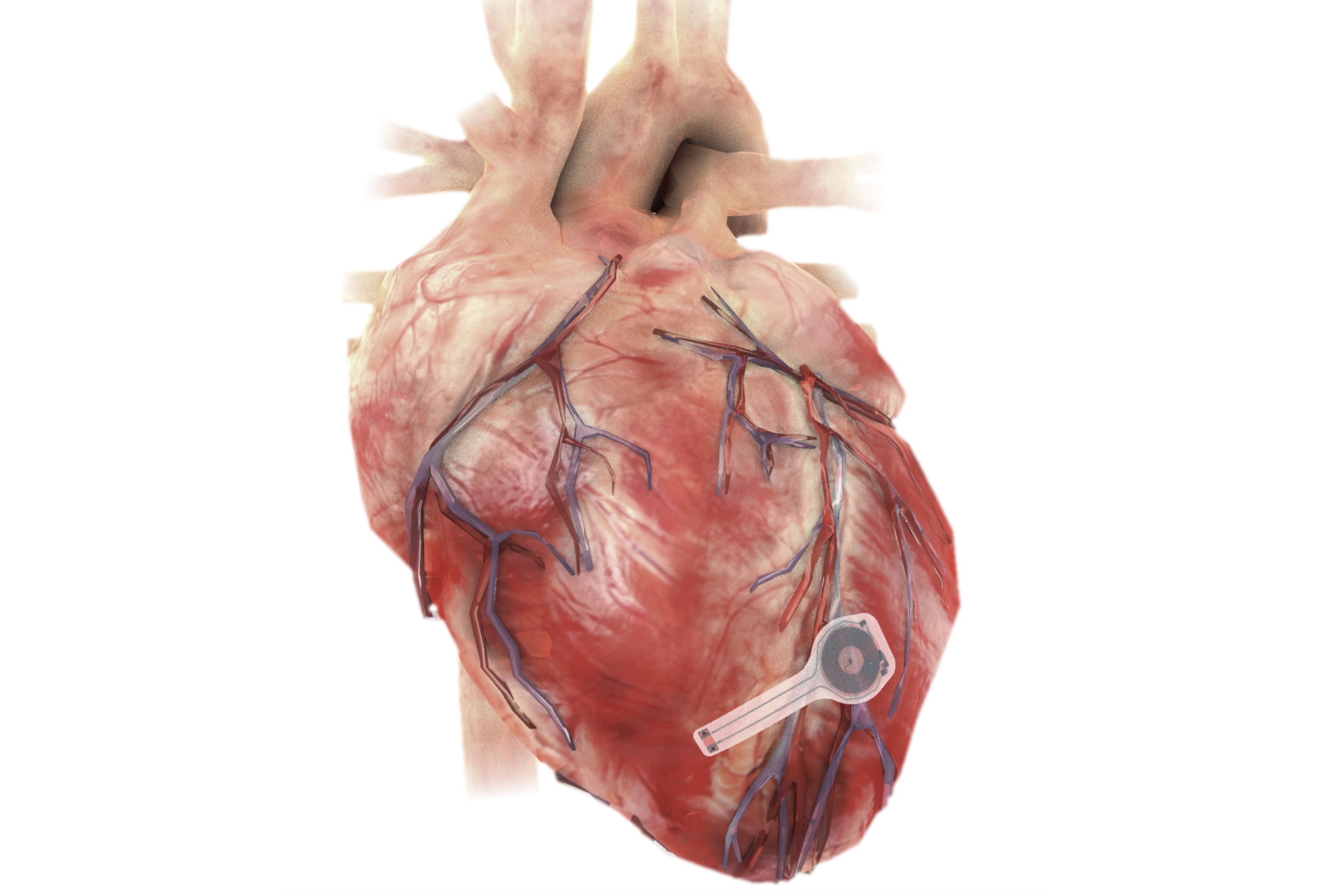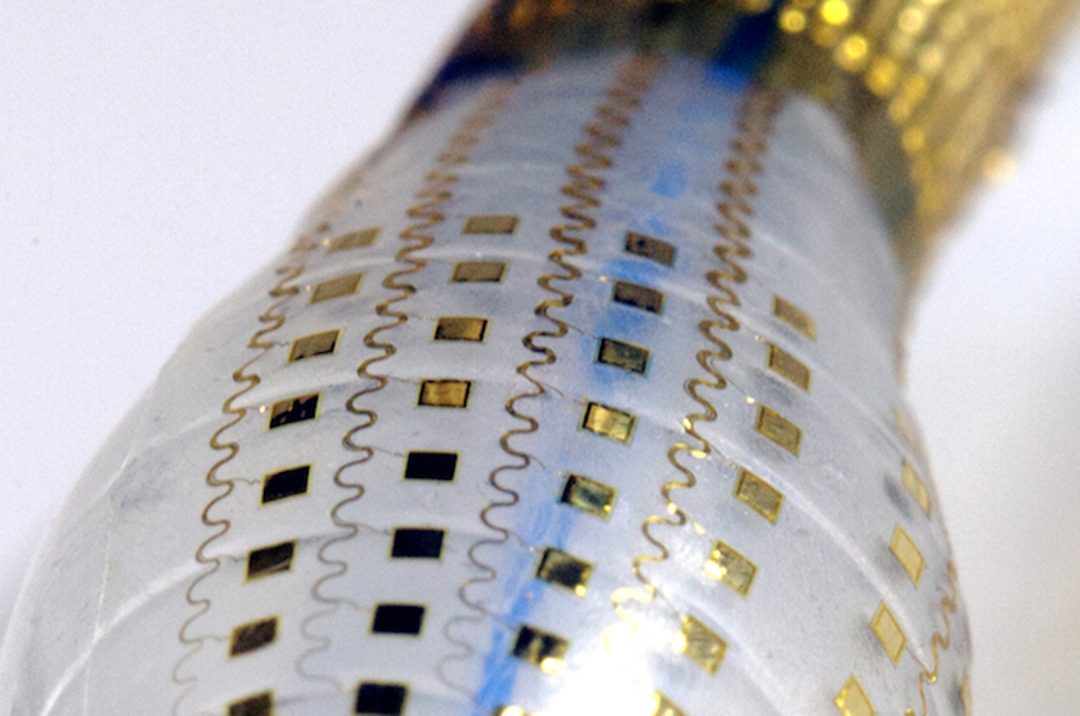Researchers at George Washington University and Northwestern University have developed the first-ever transient pacemaker—a wireless, battery-free, fully implantable pacing device that disappears after it’s no longer needed.
A new study published last month in Nature Biotechnology demonstrates the device’s efficacy across a series of large and small animal models.
The thin, flexible, lightweight device could be used in patients who need temporary pacing after cardiac surgery or while waiting for a permanent pacemaker, according to a Northwestern University news release. All components of the pacemaker are biocompatible and naturally absorb into the body’s biofluids over the course of five to seven weeks, without needing surgical extraction.
The device wirelessly harvests energy from an external, remote antenna using near-field communication protocols—the same technology used in smartphones for electronic payments and in RFID tags. This eliminates the need for bulky batteries and rigid hardware, including wires (or leads) that can introduce infections or become enveloped in scar tissue, causing further damage when removed.
This study was co-led by GW School of Engineering and Applied Science Professor Igor Efimov, the Alisann and Terry Collins Professor of Biomedical Engineering; Northwestern Professor John A. Rogers; and Rishi Arora, a cardiologist at Northwestern Medicine.
“The transient electronics platform opens an entirely new chapter in medicine and biomedical research,” Dr. Efimov said. “The bioresorbable materials at the foundation of this technology make it possible to create whole host of diagnostic and therapeutic transient devices for monitoring progression of diseases and therapies, delivering electrical, pharmacological, cell therapies, gene reprogramming and more.”
Traditional hardware placed in or near the heart creates risks for infection and other complications, said Dr. Rogers, who led the device’s development. Eliminating the need for surgical extraction, transient pacemakers offer potential for reduced costs and improved patient outcomes.
“This unusual type of device could represent the future of temporary pacing technology,” he said.
Currently, to set up a temporary pacing after open heart surgery, surgeons must sew on temporary pacemaker electrodes on the heart muscle during surgery. These have leads that exit the front of a patient’s chest, connecting to an external pacing box that delivers a current to control the heart’s rhythm.
When the temporary pacemaker is no longer needed, physicians remove the pacemaker electrodes. Although uncommon, potential complications of implanted temporary pacemakers include infection, dislodgement, torn or damaged tissues, bleeding and blood clots.
With Northwestern and GW’s transient pacemaker, surgeons and patients can sidestep this potentially risky procedure. The fully implantable device is thin and light— weighing less than half a gram. The soft and flexible device encapsulates electrodes that softly laminate onto the heart’s surface to deliver an electrical pulse.
The device can be activated remotely after insertion and will dissolve or degrade on its own after several weeks. This development is potentially a “major victory for post-operative patients,” Dr. Arora said.




